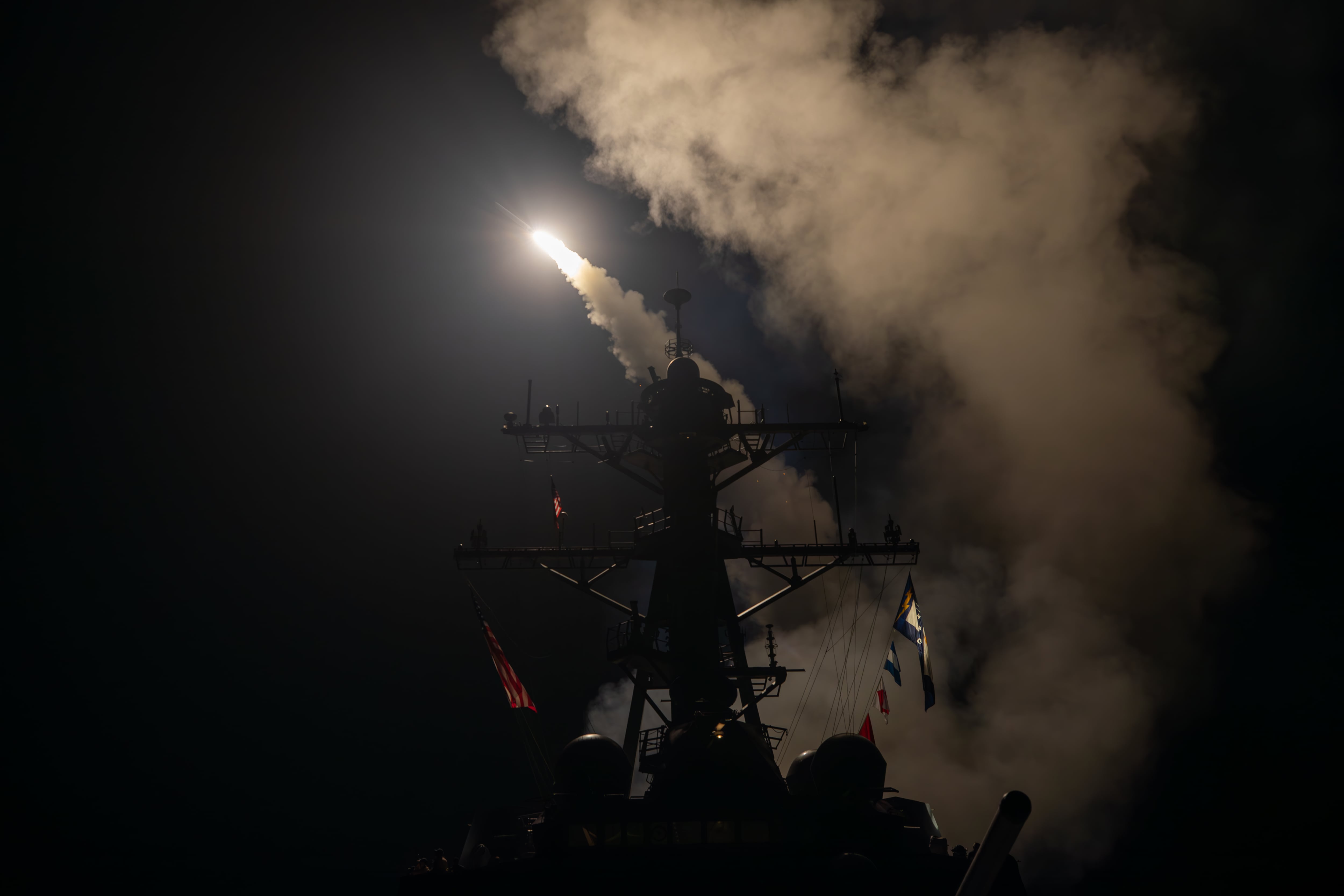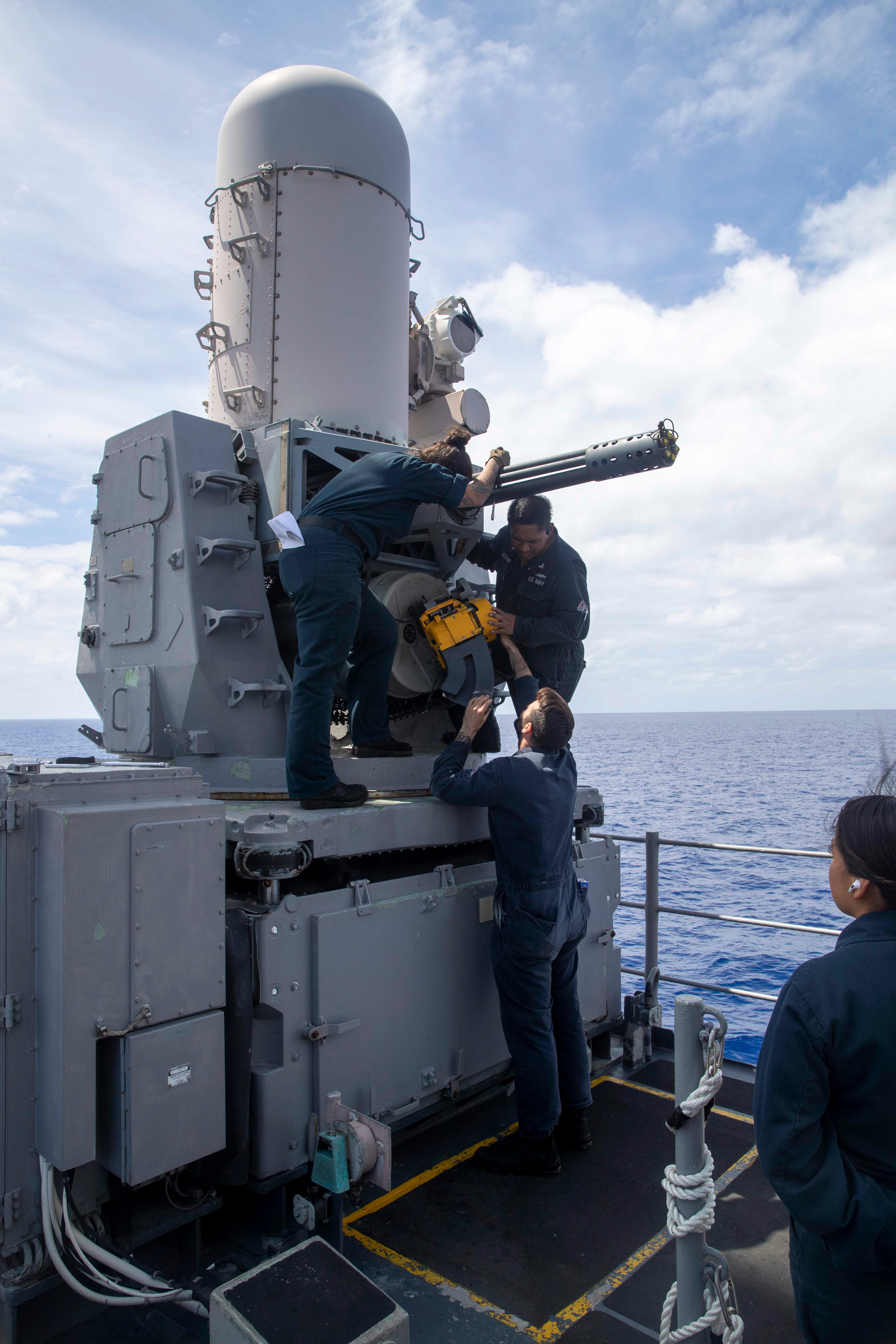A Houthi anti-ship missile got within a nautical mile of the Navy destroyer Gravely on Tuesday, and the warship used its Phalanx Close-In Weapons System to take the missile out, a senior defense official has confirmed to Navy Times.
The official, granted anonymity to discuss operations, declined to comment on why the system, known as CIWS, was used to take out the target, when destroyers, like Gravely, have several weapons systems and missiles for taking out such targets from farther ranges.
But the official pushed back on any suggestion that Monday’s close call entailed any kind of advancement in the sophistication of attacks by the Iran-backed Houthi rebels, who have shot dozens of attack drones and missiles at commercial vessels and Navy ships in the Red Sea and Gulf of Aden since the start of the Israel-Hamas war in October.
CNN first reported the close call on Wednesday.
Given the speed of any given missile, it would not take long for such a munition to travel a nautical mile.
The CIWS is essentially a big 20-millimeter cannon on a warship’s deck that can fire up to 4,500 rounds a minute at missiles and aircraft, according to the Navy.
It is one piece of a Navy’s warship’s defensive layers, and “a last-ditch, kinetic anti-air defense system,” said Jan van Tol, a retired Navy warship captain and current senior fellow at the Center for Strategic and Budgetary Assessments think tank.
“Obviously not an optimal situation if CIWS had to make the kill,” he told Navy Times in an email.
The Navy and U.S. Central Command have not confirmed which weapons systems Navy destroyers have been using to take out Houthi attacks, save for the SM-2 missile.
Much remains unclear regarding why Gravely had to use its CIWS, and why other systems didn’t take the missile out.
The missile’s flight profile, perhaps it was a “sea-skimmer,” may have played a role, van Tol said.
“If an incoming missile is coming in low, it may not be seen until well inside the max range of longer-ranged Standard Missiles,” he said.
It also remains unclear whether Gravely was carrying any Evolved Sea Sparrow Missiles, which have far greater range than CIWS, and if those missiles were employed and missed the target.
Gravely may have tried unsuccessfully to engage the missile with its five-inch gun, which also has a farther range than CIWS, van Tol added.
RELATED

“So far, those [Navy destroyer] crews have been doing a very good job knocking these Houthi missiles and drones down,” he said. “But it should be kept in mind that, so far at least, these [Houthi weapons] don’t appear to have been very high-performance weapons.”
While Navy destroyers have had to battle occasional barrages of missiles and drones, such intercepts have largely involved taking out one or two targets at a time, according to CENTCOM’s press statements following such attacks.
“It remains to be seen how well crews and systems will handle salvos if the Houthis are able to coordinate more complex attacks,” van Tol said.
Meanwhile, Navy destroyers are knocking out Houthi fires almost daily in the Red Sea and Gulf of Aden, and questions are being raised about the sustainability of such operations, given a destroyer’s finite missile capacity.

On Wednesday night local time, fellow destroyer Carney shot down one anti-ship ballistic missile and three Iranian drones in the Gulf of Aden, according to CENTCOM.
The continued Houthi attacks come just days after a drone attack on U.S. base in Jordan killed three U.S. soldiers.
The Pentagon has blamed Iran-backed militants for that attack, and its leaders reportedly called for a pause on attacks against U.S. ground forces in Iraq and Syria earlier this week.
Geoff is the managing editor of Military Times, but he still loves writing stories. He covered Iraq and Afghanistan extensively and was a reporter at the Chicago Tribune. He welcomes any and all kinds of tips at geoffz@militarytimes.com.




